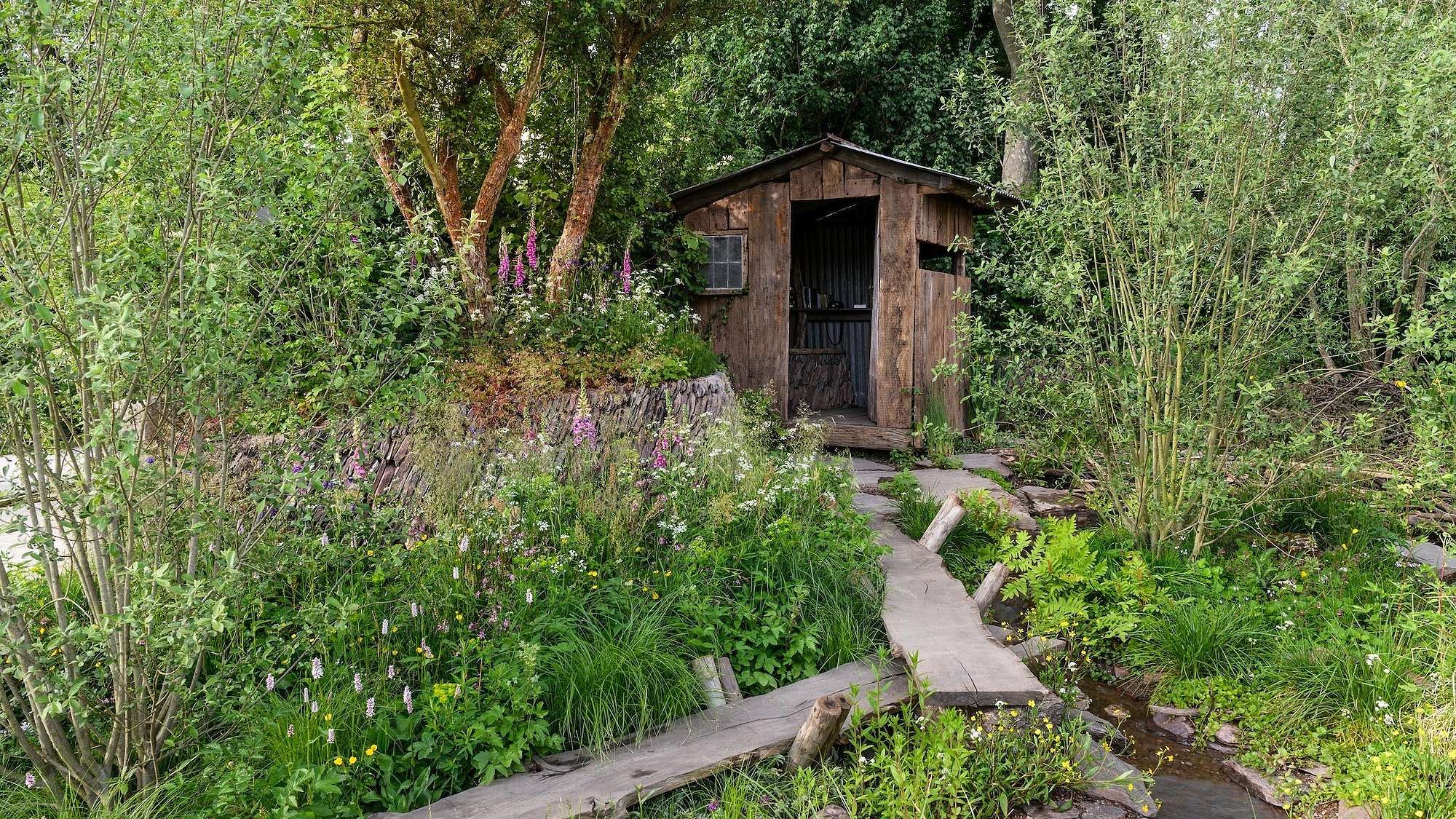
Re-wilding and ‘No Mow May’
Re-wilding is the current buzzword in gardening circles. The principle extends a centuries-long shift in perspective from the geometrical rigidity of the great house gardens of the 18thand 19thcenturies to a freeform approach valuing asymmetry. It parallels the transition in art from realism to abstraction that came with Picasso and his ilk. Fortunately, in Britain, components of the great garden, like perennial borders, have always stepped beyond military-style planting espousing instead tangles of long blooming, weed inhibiting, perennial plants that have become The English Border style.
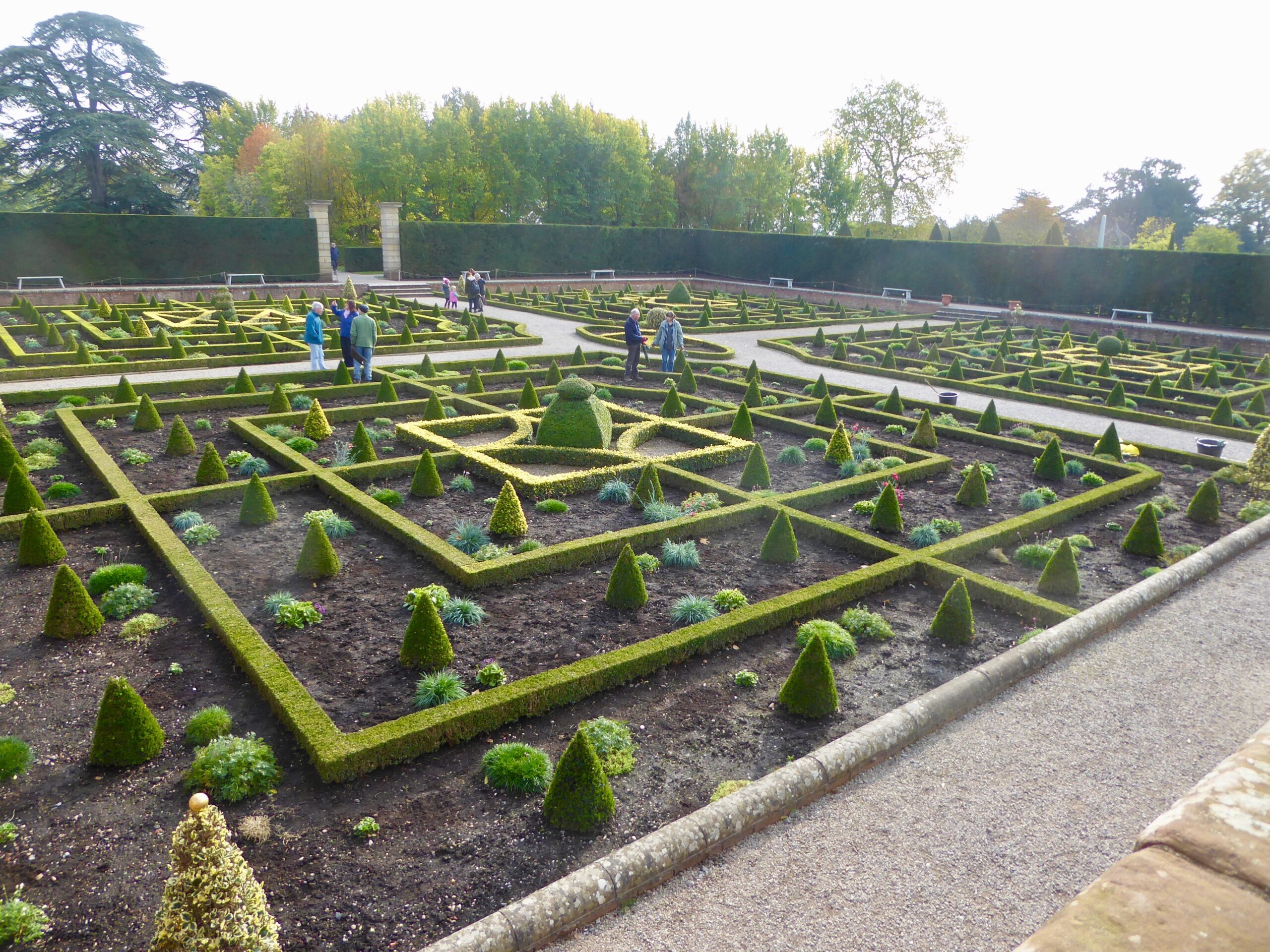
The current re-valuation of Britain’s native flora and fauna and the rate at which they are diminishing in numbers and diversity is now driving a countrywide movement that recognises the need for action to preserve them. Over half of our species are in decline and one in seven is headed toward extinction. The idyllic, wildflower filled meadows of the first half of the 20thcentury are no more than a dream now. It’s estimated that Britain’s gardens cover an area more than twice as large as all of our national nature reserves put together and could make a significant contribution to arresting the declines. The move toward the re-wilding of at least part of those gardens is born of those stimuli.
Left: Restoration of a 19th century garden design in progress by the National Trust.

The Englsh border.
Following this trend, the theme of this year’s internationally acclaimed Chelsea Flower Show was ‘Wild’ and the Best in Show gold medal was won by an entry called A Re-wilding Britain Landscape, depicted in the masthead of this post (photo by Neil Hepworth). It was an entry that was composed of many native wildflowers and grasses and is symbolic of the momentum that places an increased value on the natural landscape that is Britain’s national heritage. Even local authorities are being challenged to reduce or time their mowing of roadside verges to avoid wildflower blooming season.
Right: A rural roadside verge in spring.
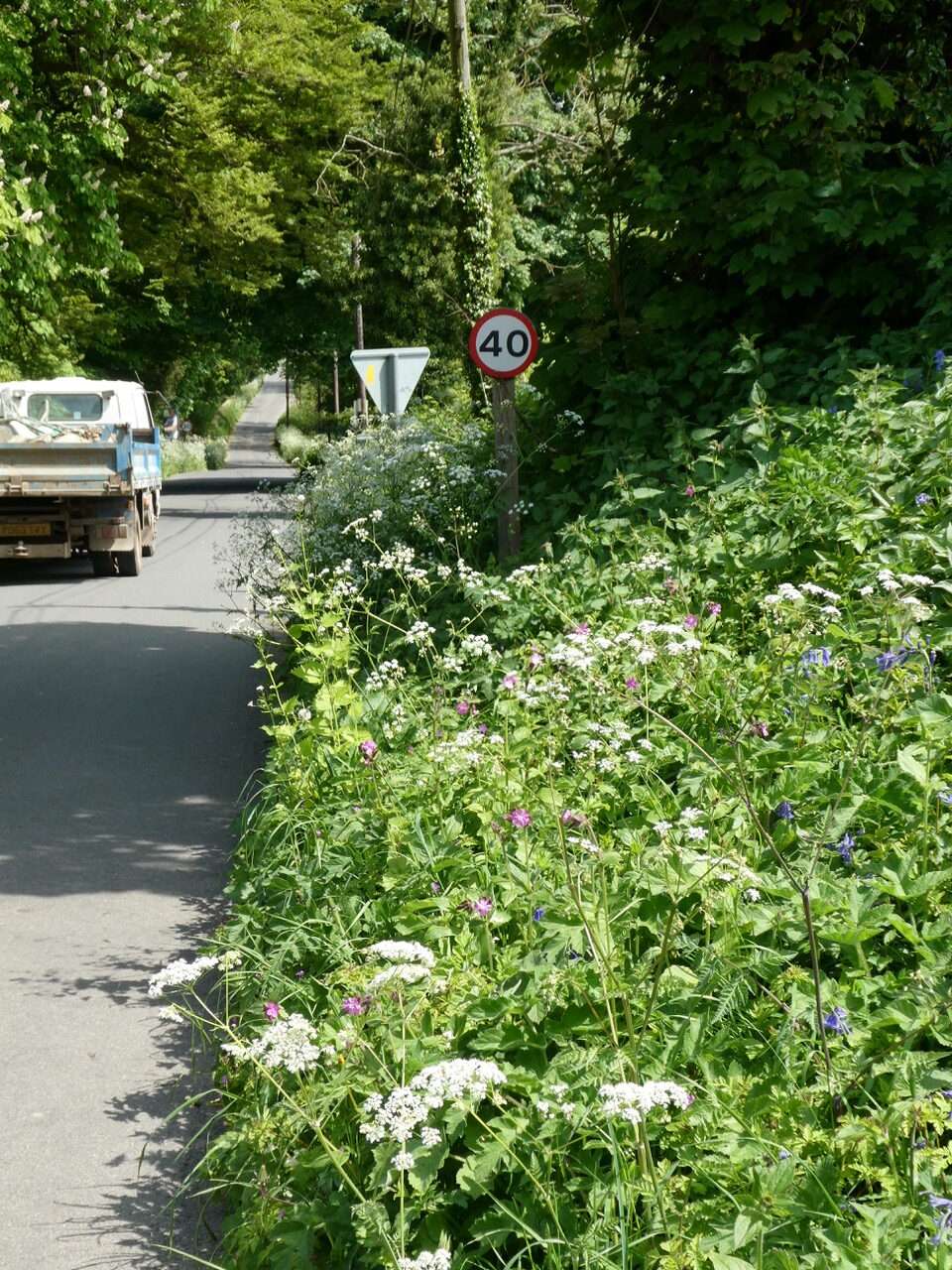
Developments on the grounds of BP during recent years are recognizing these needs and trends. It is a bonus that some aspects of re-wilding can help reduce maintenance labour and cost. The perennial garden may or may not be everyone’s cup of tea, but it eventually slashes costs. We have always produced our own compost, but now we also have a stock of mulch generated from our own trees that assists in weed control and moisture-retention. The initiative in the southeast corner of the grounds to develop a wildflower meadow there is a work in progress (see A Seedy Area in What’s Going On). There has been a program of tree planting detailed in these posts. Our participation in the ‘No Mow May’ project, reviewed below, is another experiment to benefit pollinators by allowing natural flora to bedeck some of our lawns in their flowering season while saving costs by reducing mowing.
We have large areas of lawn that cost a great deal to maintain. There are those, now, who regard the traditional lawn as “filled with alien grasses that are a near biological desert dominated by a few species” while others espouse them as a “must have” for a grand house. For some gardeners, it may come down to a choice between enjoying a manicured lawn or a natural meadow bustling with wildlife. It’s about a shift in perspective in our changing world. Fortunately, we don’t have to choose, we can have both and still save on maintenance fees.
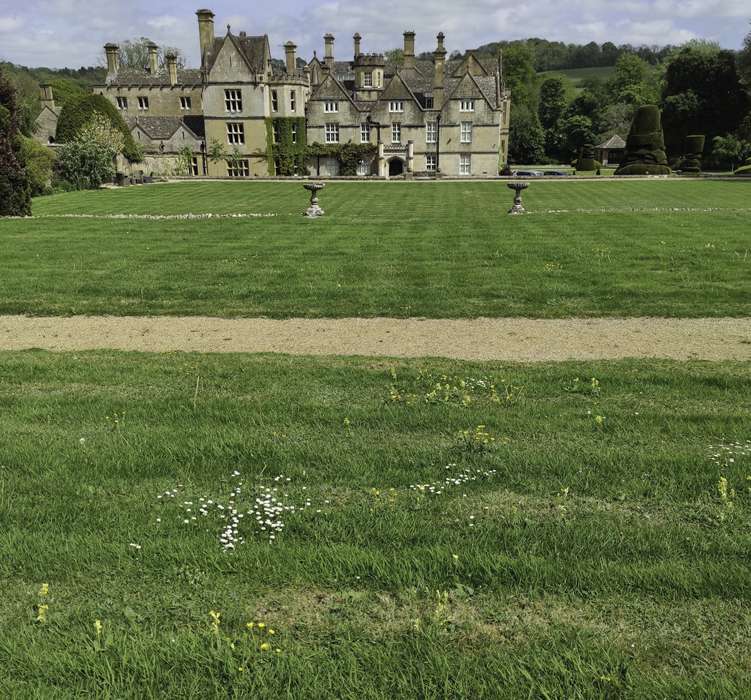
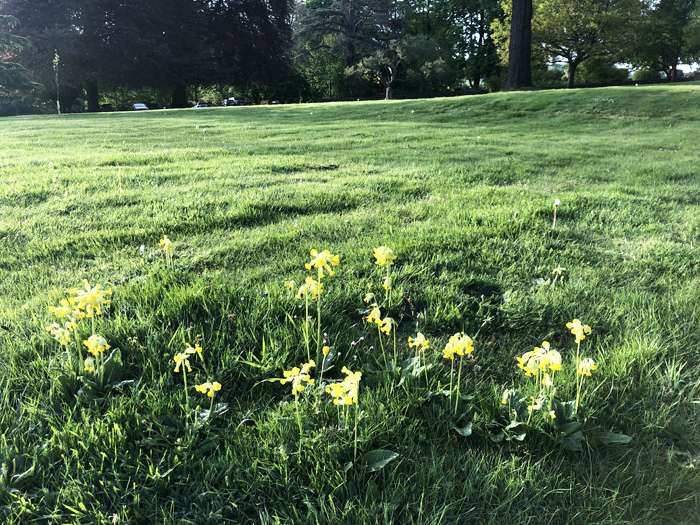
Three views of the ‘No Mow’ area in early May. Cowslips and daisies.
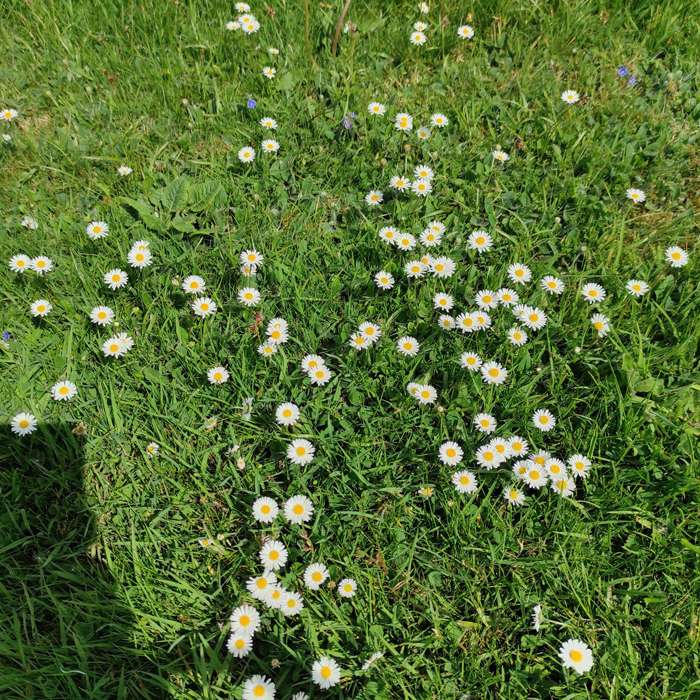
Our ‘No Mow’ area has not produced spectacular results though it has its fair share of daisies and buttercups, blue dots of speedwell and yellow cowslips that would not previously have been available to pollinators. According to accounts, it has been thronged with bees, bugs, butterflies and birds. Plenty of copper butterflies are reported and a blue butterfly that may have been a common blue or perhaps a chalk-hill blue or Adonis blue, both quite rare. Possibly the flowering is all we could expect to see the first year after many years of regular mowing. Like the small, triangular ‘wild’ lawn alongside the forecourt to the south, it may take several years for different plant species to begin to show and proliferate.

Comparison of the ‘No Mow’ area and the mown lawn at the end of May.
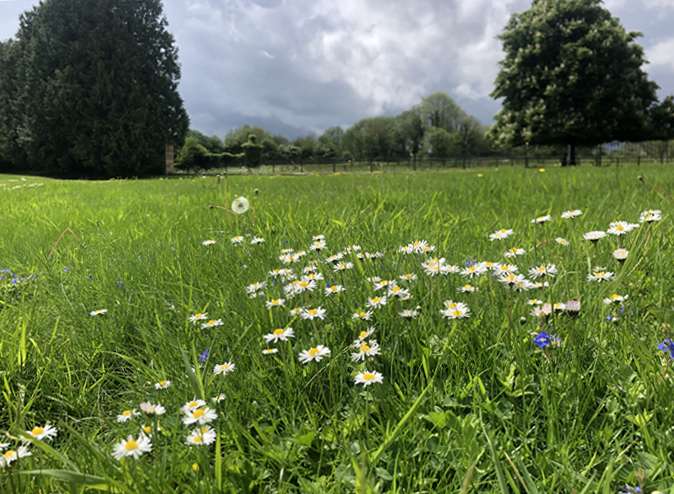
Above and right: Daisies and buttercups were expected to be among the most prevalent species and often carpet the lawns elsewhere, but usually they are mowed off.
Photos at the end of May.
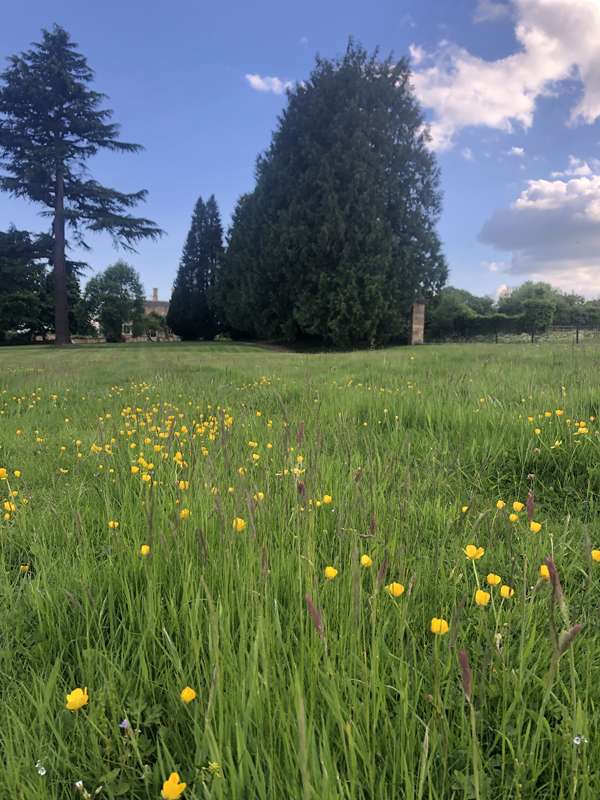
Splitting the responsibility for tending gardens and lawns has revealed that the cost of mowing our lawns is perhaps the last large piece in the puzzle to reduce fees. Seasonal or limited re-wilding of some lawns may not only offer a path to serve our countryside, it might also prove to be one to reduce our expenses.
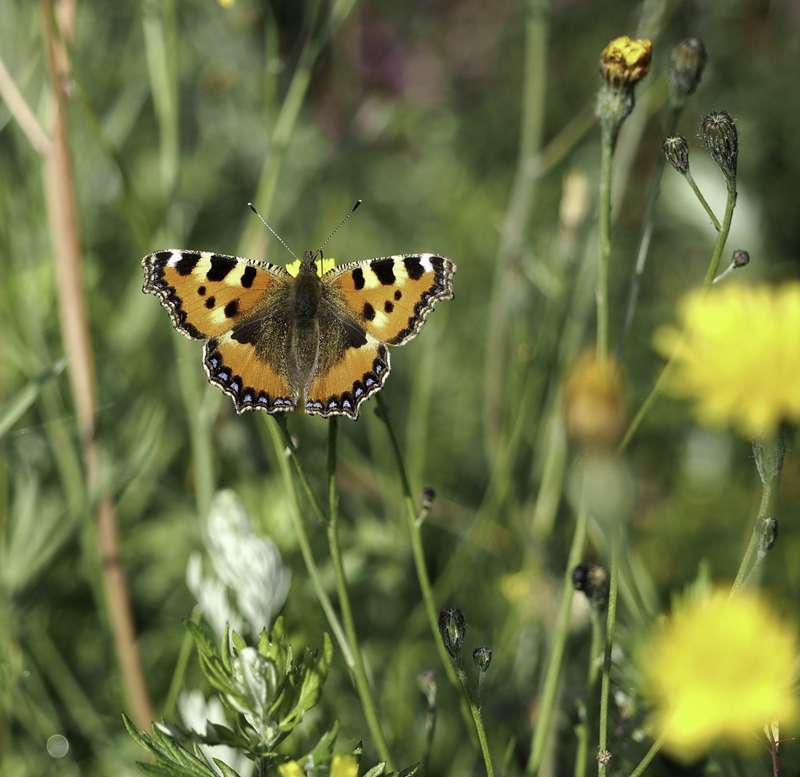
Above: A butterfly rests on hawkweed.
Right: A bumblebee harvests nectar from speedwell.
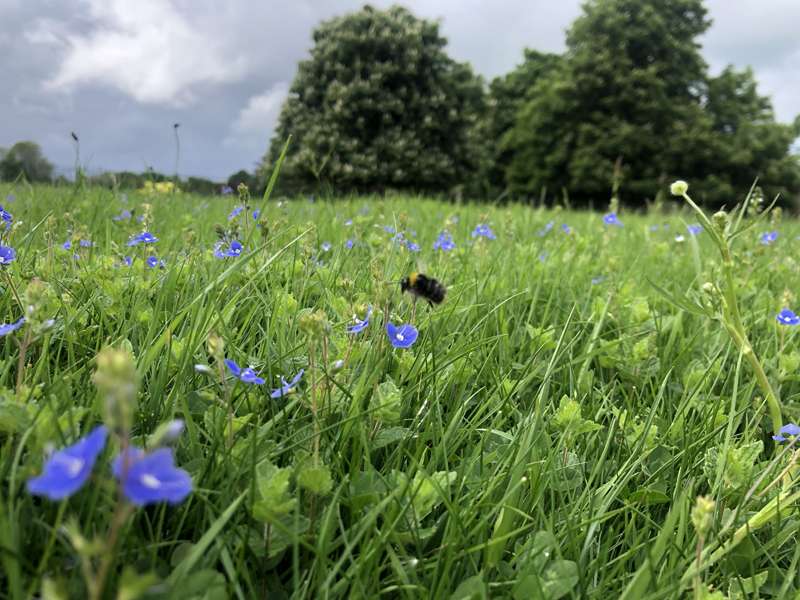
Thanks to Riah King-Wall and Giles Browne for ‘No Mow’ photos.
__________________________________
